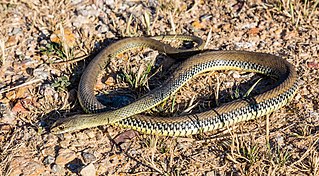
The common reed warbler is an Old World warbler in the genus Acrocephalus. It breeds across Europe into the temperate western Palaearctic where it is migratory, wintering in sub-Saharan Africa. It is also a resident species over large parts of Africa.

Hermann Schlegel was a German ornithologist, herpetologist and ichthyologist.

Johann, or Jean-Frederic, Hermann, or Herrmann, was a French physician and naturalist.

Hermann's tortoise is a species of tortoise native to Europe.

The great tinamou is a species of tinamou ground bird native to Central and South America. There are several subspecies, mostly differentiated by their coloration.
82 Aquarii is a star in the equatorial constellation of Aquarius. 82 Aquarii is its Flamsteed designation. It has an apparent visual magnitude of 6.15, which, according to the Bortle Dark-Sky Scale, means it is a faint star that requires dark rural skies to view. The annual parallax shift of 82 Aquarii is 3.6764±0.1715 mas, which equates to a distance of roughly 890 light-years from Earth. Because this star is positioned near the ecliptic, it is subject to lunar eclipses.

The red collared dove, also known as the red turtle dove, is a small pigeon which is a resident breeding bird in the tropics of Asia. The male has a blue-grey head and a red-brown body. The female is much plainer, with pale brown plumage similar to that of the larger Eurasian collared dove.

The Natal free-tailed bat is a species of bat in the family Molossidae, the free-tailed bats. It is endemic to the island of Mauritius. It is known from fewer than five locations in its range, but it is common at a few sites. It roosts in caves, and it is considered to be an endangered species due to disturbance of its cave habitat.

Jean-Frédéric Hermann was a French physician and naturalist mainly interested in entomology.

The Musée zoologique de la ville de Strasbourg is a natural history museum managing and displaying the zoological collections of the city of Strasbourg. It is housed in a historical building of the University of Strasbourg. The museum is closed since September 2019, and until 2025 for renovation and enlargement.

Aegithalos is a genus of passerine birds in the family Aegithalidae (bushtits), encompassing majority of the species in the family.

The wing-banded antbird is a species of passerine bird in subfamily Myrmornithinae of family Thamnophilidae, the "typical antbirds". It is found in Brazil, Colombia, Ecuador, French Guiana, Guyana, Nicaragua, Panama, Peru, Suriname, and Venezuela.

Jules Alphonse Nicolas Hoffmann is a French biologist. During his youth, growing up in Luxembourg, he developed a strong interest in insects under the influence of his father, Jos Hoffmann. This eventually resulted in the younger Hoffmann's dedication to the field of biology using insects as model organisms. He currently holds a faculty position at the University of Strasbourg. He is a research director and member of the board of administrators of the National Center of Scientific Research (CNRS) in Strasbourg, France. He was elected to the positions of Vice-President (2005–2006) and President (2007–2008) of the French Academy of Sciences. Hoffmann and Bruce Beutler were jointly awarded a half share of the 2011 Nobel Prize in Physiology or Medicine for "their discoveries concerning the activation of innate immunity,". [More specifically, the work showing increased Drosomycin expression following activation of Toll pathway in microbial infection.]

Malpolon monspessulanus, commonly known as the Montpellier snake, is a species of mildly venomous rear-fanged snake.

Empis is a genus of dance fly found in the fly family Empididae.
The year 1804 in birding and ornithology.

Bepea is a moth genus in the subfamily Spilomelinae of the family Crambidae.

Neobisium is a genus of pseudoscorpions in the family Neobisiidae.

The oval grouper also known as the blackfin grouper, melon-seed grouper or oval rockcod, is a species of marine ray-finned fish, a grouper from the subfamily Epinephelinae which is part of the family Serranidae, which also includes the anthias and sea basses. It is found in the Western Pacific Ocean.

Cyta latirostris is a species of snout mite in the family Bdellidae. The cosmopolitan species was first described by Jean-Frédéric Hermann in 1804 as Scirus latirostris.


















